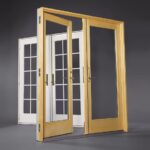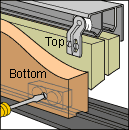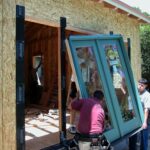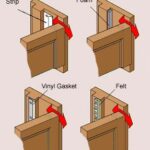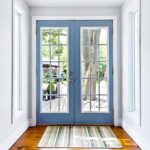Patio doors and sliders are manufactured from a variety of materials. A wood door isn’t necessarily just wood—some wood doors have steel interiors, and some steel doors have wood exteriors. A fiberglass or steel door may have a wood frame. And nearly any door may have an energy-efficient core of foam insulation. Some sliders are also made of aluminum.
For more about the materials used for doors, see Front & Entry Doors Buying Guide.
Wood patio doors. This is the most common material used for patio doors because of its natural beauty. Scratches are relatively easy to repair. Because wood is vulnerable to weather damage, it must be given a durable finish of stain or paint, and they must be re-stained or repainted every few years. You can buy wood doors that are factory primed or pre-painted in standard colors, or, for a premium, painted with custom colors.
Both hardwoods and softwoods are used, though hardwood is more common when a natural finish is desired. Various have their own advantages and disadvantages—some are very durable in weather and others are better for staining. Here are the characteristics of a few popular species:
• Poplar is an ideal choice because it accepts paints and stains well and is typically inexpensive.
• Red oak is the most popular and abundant of the hardwoods. It has excellent water resistance and will take more abuse due to its courser grain.
• Ash is slightly harder than red oak and stains well.
• Hickory is the strongest, heaviest, and hardest of the hardwoods. It looks best in a rustic application such as a log cabin.
• White oak is considered the best all-around wood and allows little or no water to penetrate its surface. It also offers excellent wear resistance and is highly stainable. White oak is commonly used on boats and in the making of wine and whiskey barrels.
• Cherry darkens with light exposure and also with age. It resists warping, and is hard, sturdy, and stains well. Cherry is sought after for use in furniture, cabinetry, and doors.
• Walnut is a tough, dark hardwood that sometimes has blonde streaks. Walnut stains to an exceptional finish and is second only to cherry as the choice for furniture, cabinetry, and doors.
• Mahogany is a tropical wood that is durable and will rarely warp. It is reddish-brown in color and has excellent finishing qualities.
Spanish cedar and white oak are other popular wood choices. Some companies offer sample kits for around $10. These kits contain samples of popular woods in thin rectangular pieces that you can sand and finish to see how they’ll look in your room.
Fiberglass composite doors. This man-made material has a clean, modern appeal and can be painted or stained. Due to the synthetic nature of fiberglass, doors made from it are durable and will never peel, swell, or warp.
Fiberglass is moderately priced, dent resistant, energy efficient, and requires little maintenance. Fiberglass, however, can crack under severe impact.
Aluminum and vinyl clad doors. Combining the best of two worlds—the beauty of natural wood indoors and the durability of aluminum or vinyl surfaces outside—clad wood doors are an extremely popular low-maintenance option. Outside surfaces of aluminum cladding is prefinished with a factory coating.
Steel doors. Steel doors are made of heavy-gauge galvanized steel applied over a core of rigid foam. Their surfaces are typically coated with a polymer or vinyl and are wood-grain embossed, but they only do a fair job of impersonating wood. Steel offers low maintenance and strength. However, steel can dent and is difficult to repair; also, this material can scratch and will rust if not repainted regularly. Because of their foam cores, most steel doors offer good energy efficiency.
Aluminum doors. Solid aluminum, used for the frames and tracks of some sliding doors, is lightweight and durable. Given an anodized finish, it resists corrosion and will not rust. It does dent easily.



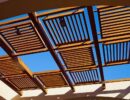
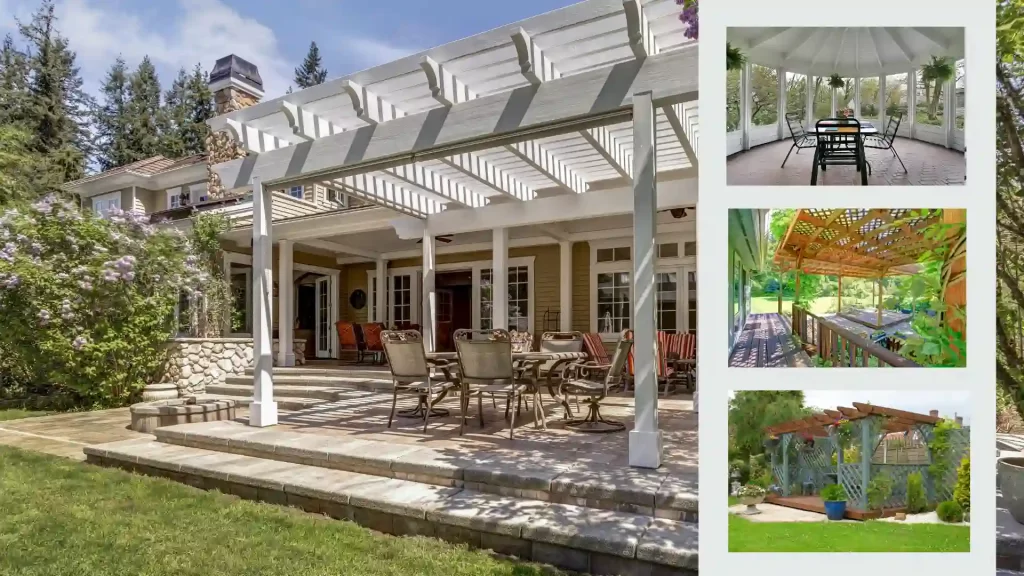
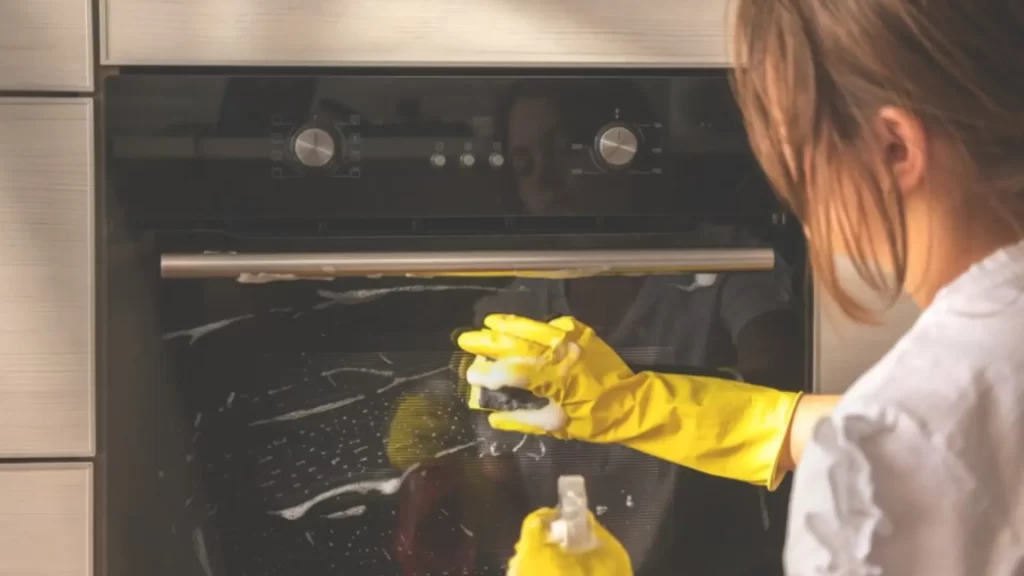
 Don Vandervort writes or edits every article at HomeTips. Don has:
Don Vandervort writes or edits every article at HomeTips. Don has:
